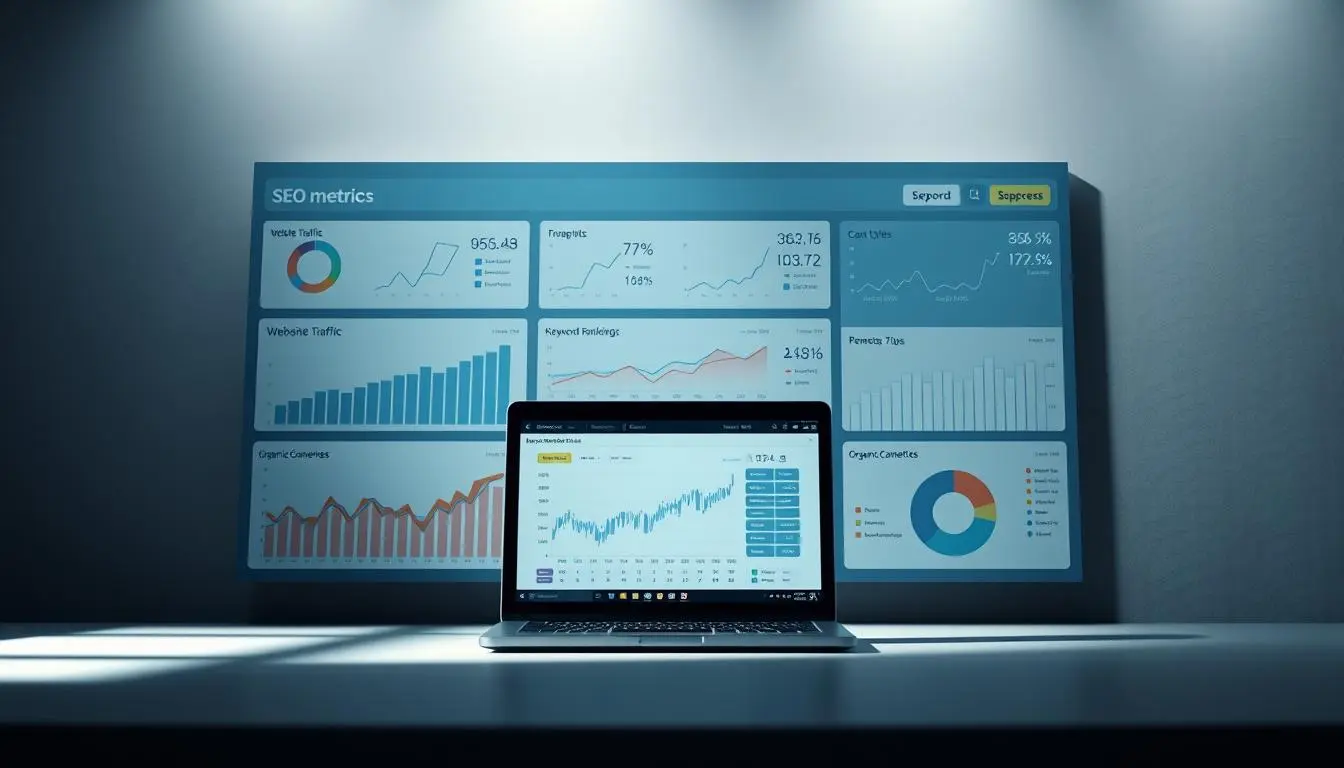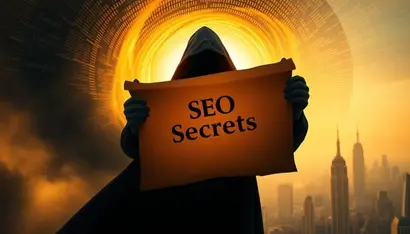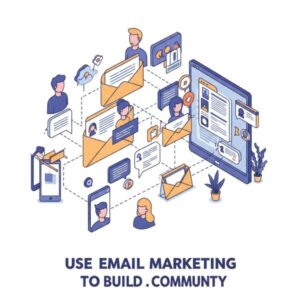The Best Email Sequences That Convert Subscribers Into Customers

Alright, let’s talk email. Not just any email, though. We’re diving deep into the magical world of best email sequences – those automated journeys that transform your casual subscribers into loyal, paying customers. Think of it as a friendly, automated conversation that guides your audience towards a desired action.
In today’s digital landscape, where attention spans are shorter than ever, a well-crafted email sequence is your secret weapon. It’s the difference between a fleeting website visit and a lasting customer relationship. So, grab a cup of coffee (or tea!), and let’s unlock the secrets to crafting email sequences that actually convert.
But first, lets begin with what is email marketing and why its affective compared to other digital marketing methods. Feel free to jump to the section on the page from here.
Article Contents:
- What is Email Marketing
- Why Email Marketing stands out
- Why Email Sequence is important
- Email Marketing anatomy
- Crafting Emails
- Tools and Platforms
- Email Sequence FAQ
What is email marketing and why its important in digital marketing space
Email marketing is a powerful digital marketing strategy that involves using email to promote products or services, build relationships with potential and existing customers, and drive conversions. Here’s a breakdown of what it entails:
Key aspects of email marketing:
- Direct Communication:
- It allows businesses to communicate directly with their audience in their inbox, offering a more personalized and targeted approach compared to other marketing channels.
- Building Relationships:
- Email marketing is effective for nurturing leads, fostering customer loyalty, and maintaining ongoing communication with subscribers.
- Promoting Products and Services:
- Businesses use email to inform customers about new products, special offers, discounts, and upcoming events.
- Driving Conversions:
- Email campaigns can be designed to encourage specific actions, such as making a purchase, signing up for a webinar, or downloading a resource.
- Segmentation and Personalization:
- A key strength of email marketing is the ability to segment audiences based on demographics, interests, and behaviors, allowing for highly personalized and relevant messages.
- Measuring Results:
- Email marketing platforms provide detailed analytics, enabling businesses to track key metrics like open rates, click-through rates, and conversion rates, allowing for continuous optimization.
Why email marketing stands out compared to other digital marketing methods:
1. Cost-Effectiveness:
- Low Barrier to Entry: Setting up basic email campaigns is relatively inexpensive. You primarily need an email marketing platform (many have free tiers) and a list of subscribers.
- High ROI: For every dollar spent, email marketing generates a significant return on investment (ROI), often much higher than social media advertising or pay-per-click campaigns.
2. Direct Reach and Control:
- Owned Channel: Your email list is yours. You control the messaging, timing, and frequency of communication without relying on algorithms or platform changes that can impact organic reach on social media.
- Targeted Audience: You send emails to people who have opted-in, showing interest in your brand or products. This targeted approach leads to higher engagement and conversion rates.
3. Personalization and Segmentation:
- Tailored Messages: Email allows for advanced segmentation (e.g., by demographics, purchase history, interests). This enables you to send highly personalized messages that resonate with specific audience segments.
- Improved Customer Relationships: Personalized emails build stronger relationships with customers, increasing loyalty and repeat business.
4. Measurable Results:
- Trackable Metrics: Key metrics like open rates, click-through rates, conversion rates, and unsubscribes are easily tracked. This data provides valuable insights for optimizing future campaigns.
- Data-Driven Decisions: By analyzing campaign performance, you can refine your strategies, improve targeting, and maximize your ROI.
5. Automation and Efficiency:
- Automated Workflows: Email marketing platforms offer automation features, allowing you to set up welcome sequences, drip campaigns, and triggered emails without manual intervention.
- Time-Saving: Automation frees up your time to focus on other marketing tasks or business priorities.
Why Email Sequences Are Your Conversion Powerhouse

Before we dive into the “how,” let’s understand the “why.” Why are best email sequences so crucial for your business?
- Nurturing Leads: Email sequences gently guide new subscribers through your sales funnel, providing valuable information and building trust.
- Automation & Efficiency: Set it up once, and it works tirelessly, freeing up your time for other crucial tasks.
- Personalization at Scale: Segment your audience and deliver tailored messages, making each subscriber feel understood.
- Increased Conversions: By strategically leading subscribers towards a specific action, you boost your conversion rates.
- Building Relationships: Consistent, valuable communication fosters lasting relationships, turning subscribers into brand advocates.
The Anatomy of a High-Converting Email Sequence
Now, let’s break down the essential components of a winning email sequence:
- The Welcome Sequence: Setting the Stage
- This is your first impression, so make it count.
- Welcome new subscribers warmly and express gratitude.
- Deliver on your promise (e.g., free ebook, discount code).
- Introduce your brand story and values.
- Set expectations for future emails.
- Example NLP keywords: welcome email series, new subscriber onboarding, first email impact.
- The Educational Sequence: Providing Value
- Establish yourself as an authority by sharing valuable content.
- Focus on solving your subscribers’ problems and addressing their pain points.
- Use a mix of blog posts, videos, and downloadable resources.
- “Content is king, but context is God.” – Gary Vaynerchuk
- Example NLP keywords: value driven emails, educational email content, problem solving email.
- The Engagement Sequence: Sparking Interaction
- Encourage replies and feedback to build a two-way conversation.
- Ask questions, run polls, and invite subscribers to share their thoughts.
- Showcase customer testimonials and success stories.
- Example NLP keywords: interactive email campaigns, customer engagement emails, feedback email sequence.
- The Sales Sequence: Guiding Towards Conversion
- Introduce your products or services in a compelling way.
- Highlight the benefits and address potential objections.
- Create a sense of urgency or scarcity to encourage action.
- Offer a clear call-to-action (CTA).
- Example NLP keywords: sales funnel emails, product launch sequence, conversion focused emails.
- The Post-Purchase Sequence: Nurturing Loyalty
- Thank customers for their purchase and provide support.
- Offer exclusive content or discounts to encourage repeat business.
- Ask for reviews and testimonials.
- Example NLP keywords: customer retention emails, post purchase engagement, loyalty email strategy.
Crafting Emails That Resonate: Best Practices with Examples:
To make your best email sequences truly effective, keep these best practices in mind, but let’s illustrate them with practical examples:
Example NLP keywords: email personalization tactics, email subject line optimization, mobile friendly email design.
Personalization is Key: Segment your audience based on demographics, interests, and behavior. Use merge tags to address subscribers by name and tailor content to their specific needs.
Example: Instead of a generic “Hello,” use “Hi [First Name]!” and then follow up with content based on their past website actions. If a subscriber viewed a specific product category, send them emails showcasing related items or offering a discount on that category.
Another Example: If you know a subscriber signed up for a beginner’s fitness guide, don’t send them advanced training emails. Instead, send them emails about basic stretching, nutrition, and beginner workouts.
Compelling Subject Lines: Your subject line is the first thing subscribers see. Make it intriguing, relevant, and concise.
Example: Instead of “Newsletter – June,” try “Unlock Your Summer Glow: Exclusive Tips Inside!” or “Don’t Miss Out! 24-Hour Flash Sale Starts Now.”
Another Example: For a welcome sequence, a subject line like “Your Free [Download Name] is Here!” is clear and actionable.
Clear and Concise Copy: Get to the point quickly and use a friendly, conversational tone.
Example: Instead of long paragraphs, use bullet points, short sentences, and break up text with headings. Write like you’re talking to a friend.
Another Example: “Hey there! We’re so glad you’re here. Here’s your free guide to getting started. Click the link below to download it now!”
Visual Appeal: Use images, videos, and GIFs to break up text and make your emails more engaging.
Example: Include a short video tutorial demonstrating a product or service. Use high-quality images of your products or team.
Another Example: GIFs can add a touch of humor and personality to your emails. Use them sparingly and ensure they’re relevant to your message.
Strong Call-to-Actions (CTAs): Tell subscribers exactly what you want them to do. Use action-oriented language and make your CTAs visually prominent.
Example: Instead of “Click here,” use “Shop Now,” “Download Your Free Guide,” or “Join the Webinar.” Make the CTA button a contrasting color to stand out.
Another Example: If you are running a special sale, use text like: “Claim Your 50% Discount Before It’s Gone!”
Mobile Optimization: Ensure your emails look great on all devices.
Example: Use a responsive email template that adjusts to different screen sizes. Test your emails on multiple devices before sending.
Another Example: Keep image sizes small to ensure fast loading on mobile devices.
A/B Testing: Experiment with different subject lines, content, and CTAs to see what resonates best with your audience.
Example: Test two different subject lines to see which one has a higher open rate. Test different CTA button colors to see which one generates more clicks.
Another Example: Try sending the same email with a different image to different segments of your list to see which image performs better.
“The money is in the list.” – Joseph Sugarman. This quote means that maintaining and nurturing an email list is one of the most profitable actions a business can take.
Tools and Platforms to Supercharge Your Email Sequences
To streamline your email marketing efforts, consider using these popular tools and platforms:
- Mailchimp: A user-friendly platform with robust automation features.
- ConvertKit: Designed specifically for creators, with powerful segmentation and automation capabilities.
- ActiveCampaign: A comprehensive platform with advanced automation and CRM features.
- GetResponse: An all-in-one marketing platform with email marketing, landing pages, and webinars.
- Klaviyo: an email platform that is very strong for e-commerce brands.
Common Mistakes to Avoid in Email Sequences
Even with the best intentions, it’s easy to make mistakes. Here are some common pitfalls to avoid:
- Sending Too Many Emails: Bombarding subscribers with emails will lead to unsubscribes.
- Ignoring Segmentation: Sending generic emails to your entire list will result in low engagement.
- Forgetting Mobile Optimization: A poor mobile experience will frustrate subscribers.
- Neglecting A/B Testing: Not testing your emails means you’re missing out on valuable insights.
- Lack of Clear CTAs: Confused subscribers won’t take action.
FAQ Section
Q: How long should my email sequence be?
A: The length of your email sequence depends on your goals and audience. A welcome sequence might be 3-5 emails, while a sales sequence could be 5-10 emails or more.
Q: How often should I send emails in a sequence?
A: There’s no one-size-fits-all answer. Start with a frequency that feels comfortable for your audience and adjust based on engagement. You can send emails daily, every other day, or weekly.
Q: What’s the best time to send emails in a sequence?
A: The best time to send emails varies depending on your audience and industry. Experiment with different send times and analyze your results.
Q: How do I segment my email list?
A: Segment your list based on demographics, interests, behavior, and purchase history. Use your email marketing platform’s segmentation features to create targeted lists.
Q: How do I track the success of my email sequences?
A: Track key metrics like open rates, click-through rates, conversion rates, and unsubscribe rates. Use your email marketing platform’s analytics tools to monitor your performance.

Conclusion: The Power of Strategic Email Sequences
In a world filled with digital noise, best email sequences provide a direct line to your audience. By crafting personalized, valuable, and engaging emails, you can build lasting relationships and drive conversions. Remember to focus on providing value, understanding your audience, and consistently testing and optimizing your approach.
By implementing the strategies and best practices outlined in this guide, you’ll be well on your way to creating email sequences that not only convert subscribers into customers but also transform them into loyal brand advocates. Now go forth and craft emails that truly resonate!

A Digital Marketer with over 10 years experience. Helping You Master SEO, Social Media and Online Promotion.







